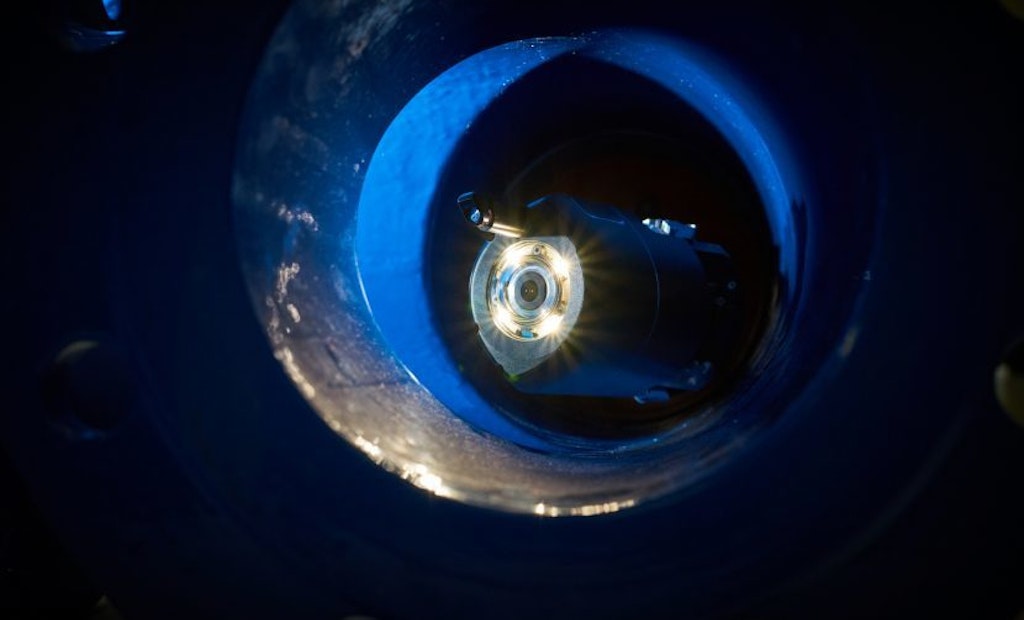Interested in Inspection?
Get Inspection articles, news and videos right in your inbox! Sign up now.
Inspection + Get AlertsA robot that autonomously moves through the drinking water network to ascertain its condition and that knows exactly what to do in problematic situations — that's the prospect of the Autonomous Inspection Robot (AIR), which received the annual innovation award during the opening ceremony of Aquatech Amsterdam 2021.
A Dutch consortium of seven drinking water companies, KWR and Demcon Robotic Systems, took the initiative for this promising robot for effective and cost-saving asset management. Under the name SubMerge, Vitens, Evides and Brabant Water submitted the robot for the award.
Aquatech Innovation Award
In the coming decades, Dutch water companies must replace a substantial part of the 120,000 kilometers of water pipes due to aging and decreasing strength. In order to tackle this task in a cost-effective manner, it is important to know the current condition of each pipe. For this purpose, an AIR is being developed that was recently awarded the Aquatech Innovation Award, a prestigious prize for the most innovative product, service or solution for the water sector. According to the jury report, AIR deserves the award because the robot can maneuver around corners, which is unique. Also, the fact that the public and private sector are linked by the cooperation of technology companies and the water sector in the development of this innovation gets high marks. As a result, the robot has been carefully thought out with multiple functionalities, according to the jury.
Autonomous Inspection Robot
Over the past decades, research has led to the creation of statistical models that can be used to assess the probability of failure of certain drinking water pipes. Satellite images of soil movement also provide input for making such estimates. But what happens underground remains largely invisible. Utilities rely on models with assumptions and estimates of the condition of pipes, not on measurement data that tells them the true condition of a pipe.
An autonomous robot that "lives" in the pipeline network, as it were, must bring about a change in this situation, said Peter van Thienen, senior researcher at KWR, in a podcast called De Waterwetenschappers (The Water Scientists) devoted especially to this topic. "Such a robot works independently 24/7, which makes it much cheaper per unit of pipe length inspected than existing techniques. The robot is our eyes and ears."
Test network as a robot obstacle course
An autonomously operating robot is equipped with various sensors that can determine the condition of pipes. The innovation is still under development; after creating a successful prototype, experiments are now being conducted with it in specially developed test networks.
"At KWR, we made a pipe network of more than 400 meters long with all kinds of bends, branches and loops, different diameters and materials," said van Thienen. "A sort of obstacle course for the robot to see how it copes with challenging practical situations."
Data-rich asset management
Much research is still needed before the autonomous robots will actually move around in drinking water pipes, says van Thienen. "But the real work starts afterwards. Once the robots are up and running, an explosion of data will hit us. We will learn a great deal from this, for example, about the processes that cause the condition of the pipes to deteriorate. We will gain a better understanding of the underlying mechanisms. The data collected by the robots will allow us to iteratively improve the algorithms used to recognize this deterioration. The increased understanding of the processes also makes it easier to predict where we should send the robot. It is an iterative process, in which the identification of problem areas in pipes and the understanding of the aging process go hand in hand."
For more information about the AIR, visit www.submerge.tech.






